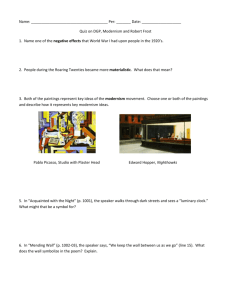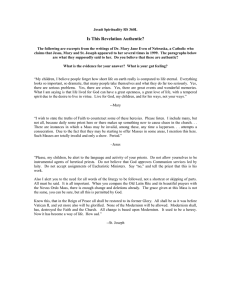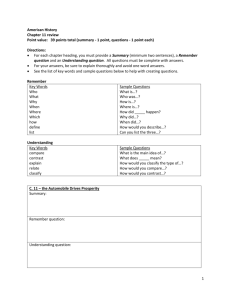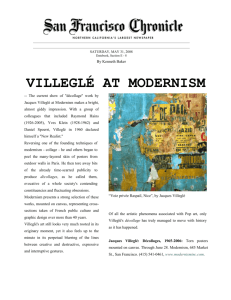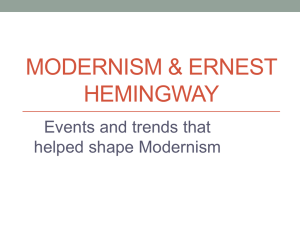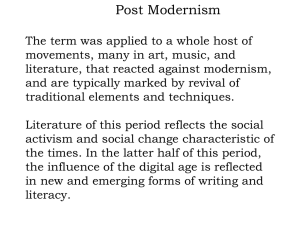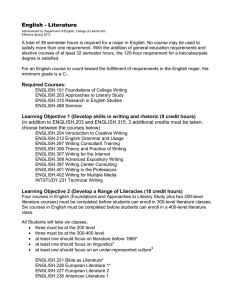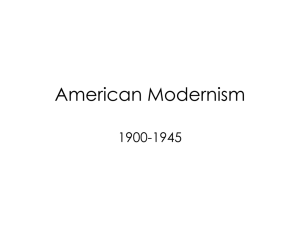Modernism The Alienation of Self
advertisement
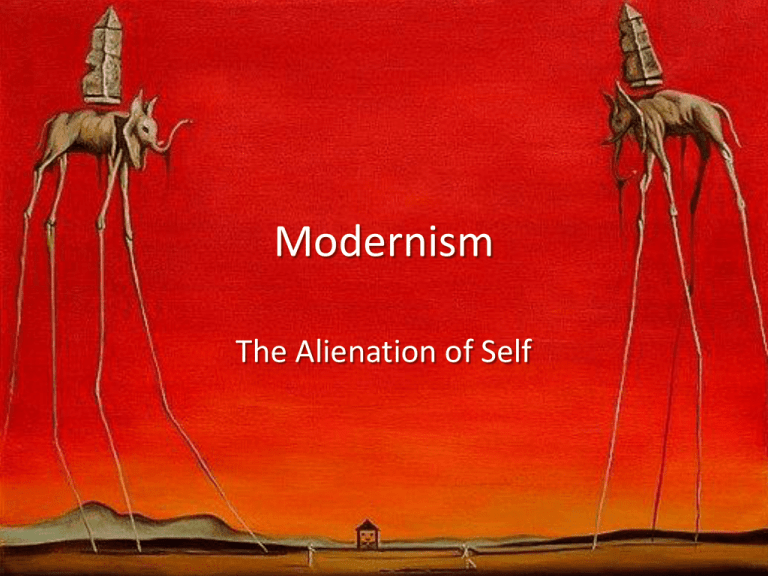
Modernism The Alienation of Self Historical events affecting Modernism • World War I (1914-1918) – 10 million soldiers and nearly as many citizens died in conflict – The feeling that civilization, as they knew it, was destroyed – Signaled the end of idealism Historical events affecting Modernism • People had more money and were focused on new ways to have fun. – – – – Radio and jazz Cars Nightclubs and speakeasies Movies • Due to prohibition, political corruption was widespread. – Gangsters flourished. – Americans grew more distrustful of foreigners. Literary Modernism • Direct response to social and cultural changes – Disillusioned by war, disgusted by the materialism of the age – Searched for different literary forms to express what they understood as the modern awareness Literary Modernism • Writers felt that individuals, especially artists, were becoming increasingly threatened by and isolated from main stream society. – Characters in modern literature were alienated–introverted, indifferent, hurt by unidentified forces. Literary Modernism • Writers experimented with writing techniques. – Stream-of-consciousness: writing random, winding patterns of thinking – Fragmentation: stories without a beginning and/or an ending. • Poets used fragmentation by composing fragments of images, dreams, dialogue, etc. – Imagism: poetry that tries to convey feelings through images instead of direct statement. Literary Modernism • Writers deliberately leave out a narrative voice to guide the reader or explain details. – The reader has to figure out what is going on in the story or poem and what the character is feeling or thinking. To Summarize… • Literary Modernism is: – A rejection of traditional themes and subject matter. – A focus on alienated individuals rather than heroes who stood for the values of society. – Frequent themes of temporariness and change. – The use of understatement and irony to reveal important emotions and ideals. Details given by writer What must be inferred Comparison • A comparison between Hemingway and Willa Cather can help you see the difference between a modernist work and a more traditionally structured one. Willa Cather, “A Wagner Matinee” I owed this woman most of the good that ever came my way in my boyhood and had a reverential affection for her. During the years when I was riding herd for my uncle, my aunt, after cooking three meals…and putting six children to bed, would often stand until midnight at her ironing board with me at the kitchen table beside her, hearing me recite Latin…gently shaking me when my drowsy head sank down over the page. What details explain Aunt Georgiana’s character and the narrator’s feelings about her? Ernest Hemingway, “The End of Something” The one-story bunk houses, the eatinghouse, the company store, the mill offices, and the big mill itself stood deserted in the acres of sawdust that covered the swampy meadow by the shore of the bay. Ten years later, there was nothing of the mill left showing through the swampy second growth as Nick and Marjorie rowed along the shore. What might be the connection between the ruined mill and Nick and Marjorie? Identify why these examples fit into the modernist movement. MORE MODERNISM EXAMPLES IN A STATION OF THE METRO The apparition of these faces in the crowd; Petals on a wet, black bough. -Ezra Pound (1913) Why does this poem fit in to modernism? What contrasts is the poem conveying? (Look past the literal words and into the deeper meaning) FIRST FIG My candle burns at both ends; It will not last the night; But, ah, my foes, and, oh, my friends– It gives a lovely light. -Edna St. Vincent Millay Why does this poem fit in to modernism? What attitude towards life does the poem express? “The further you go in writing, the more alone you are.” -Ernest Hemingway from an interview What do you think Hemingway meant by this quote? “You are all a lost generation.” -Gertrude Stein spoken to Ernest Hemingway Why do you think this is true for those who came of age during and after World War I?
